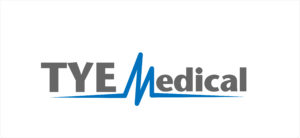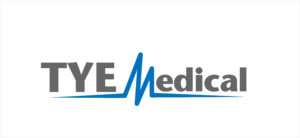How to Find the Right Incontinence Product
Tye Medical Incontinence Products
For more information about the author, click to view their website: Tye Medical
Feb 26, 2024
Florida - Sarasota, Bradenton & Charlotte Counties
Email US
Click to Email UsIt's not easy to choose the incontinence product that fits
you best; it may not be a good idea to pick up a product by brand name only.
Instead, choose the product that will work best for you. The important features
of an incontinence product are leak protection, comfortable fit, and
absorbency. Find a well-balanced product. Not all incontinence products are
created equal!
Keys to finding the perfect product for you or your loved
one:
Avoid chain stores
Chain stores have limited brands on the shelf and don't provide many choices. They often exclude certain sizes and/or types. Avoid choosing one based solely on the appearance of the package. Visit websites and research; educate yourself on all the available options. This is crucial to picking the correct product!
Don't just assume the brands you are familiar with will
provide the best value. Know all your options!
Unfortunately, mass-marketed national brands are not always
the best products for your incontinence needs. You deserve the highest quality
products available to you. Often, you'll find a better-quality product
with better cost effectiveness.
Ask for free samples
Many incontinence product manufacturers and providers will
give you samples for free trials. Contact them, and ask for free samples! Don't
hesitate to ask for 2 different sizes if you are in between the sizes, because
the proper fit and size matters!
Check if it has leak protection
Find out what kind of leak protection the product pro
vides. For example, some products have built-in leakage barrier leg cuffs that
provide the best leak protection!
Products that only advertise "excellent
absorbency" usually lack a leak protection system, and often this
"excellent absorbency" claim turns out to be unsatisfactory. Those
claiming only good absorbency performance from lab oratory tests can mean
inadequate performance.
Choose the correct size
Choosing the correct size is very important. It has a lot to do with preventing leakage and comfortable fit. If the fit is too tight, it is uncomfortable; while if too loose, it may not give you proper leak protection as intended. For a product to perform at its best, you need to choose the right size. Good manufacturers provide a variety of sizes for this reason. Wear as instructed
Check if it has leak protection
Find out what kind of leak protection the product pro
vides. For example, some products have built-in leakage barrier leg cuffs that
provide the best leak protection!
Products that only advertise "excellent
absorbency" usually lack a leak protection system, and often this
"excellent absorbency" claim turns out to be unsatisfactory. Those
claiming only good absorbency performance from laboratory tests can mean
inadequate performance.
Adult incontinence products are not difficult to use; however,
please read the instructions on the product's package or the product brochures.
Usually, you can find some helpful information.
Ask for a better option for a better solution, Do not
hesitate to reach out to customer service with the incontinence product
providers for consultation. Ask for other options. They will usually provide
you with solutions, and with free samples for you to try! Make sure of a
comfortable fit Incontinence products are worn every day. If it's uncomfortable,
you may want to look for a better one. If you are taking care of those who use
incontinence products, please ask how the product feels when wearing. Choose
the best quality product, usually, it ends up with less cost/waste
In many cases, one consumes a lot of incontinence products
a day; such as 5 or 7 pieces a day. A cheap product requires more changes and
creates more waste. In contrast, a high-quality product requires less change
and less waste. As a result, you would spend much less money on the higher-quality
incontinence products. In this way, a high-quality product is deemed
cost-effective as well. Don't be deceived by cheap price tags; you may want to evaluate
your cost per day to be cost-effective. Don't stay conventional There
are more incontinence solutions than you know. So many advances have been made
in incontinence products! Try a new and advanced approach; the 2-piece system*
for example, because it might be a better solution to your incontinence
issues.
The 2-piece system uses 2 pieces, such as an insert pad and
a brief, or an insert pad and a protective underwear. It is very convenient
because it allows you to change the pad multiple times throughout the day
without changing the briefs or protective underwear. For example: instead
of going through 5 briefs a day, you may only use 1 brief and 4 pads in a day.
This way you can avoid waste and save money by purchasing the less expensive
insert pads versus the more expensive briefs or protective underwear.
Other Articles You May Like
Technology in Home Health: How Smart Devices Help Seniors Thrive
As we age, our needs evolveand so does the technology that supports us. Todays smart devices are transforming how seniors receive care, manage their health, and remain independent in the comfort of their own homes. Whether it's a voice-activated assistant, a smart medication dispenser, or a fall detection system, smart devices for seniors are reshaping what aging in place truly means.In this blog, well explore how technology is driving innovation in home health care, the benefits of smart devices for seniors, and how caregivers and families can use these tools to enhance the quality of life for their loved ones.The Rise of Smart Devices in Senior CareThe integration of smart technology into daily life isnt just for tech-savvy millennials. Seniors are increasingly embracing tools like Amazon Alexa, wearable health monitors, and GPS-enabled devices. These technologies are designed to be user-friendly and accessible, providing crucial support to those managing chronic conditions or needing daily assistance.For home health providers, incorporating smart devices into care plans offers real-time data and improved communication, allowing for better decision-making and timely interventions.How Smart Devices Support IndependenceOne of the primary goals of senior care is to help aging adults remain as independent as possible. Smart home technology helps achieve this by automating tasks and providing safety nets that reduce reliance on caregivers.For example, smart thermostats can maintain comfortable indoor temperatures, voice assistants can remind users to take medications, and smart lights can reduce fall risk by turning on automatically when movement is detected.Monitoring and Emergency SupportSmart medical alert systems go beyond traditional push-button pendants. Todays wearable devices can automatically detect falls and send alerts to emergency contacts or health providers. Some devices also monitor vital signs and track activity levels, providing a holistic picture of a seniors well-being.These tools are especially valuable for families who live far away and want peace of mind that their loved ones are safe.Medication Management Made EasyManaging multiple medications is a daily challenge for many seniors. Fortunately, smart pill dispensers can be programmed to release medications at scheduled times, accompanied by audible or visual reminders. This reduces missed doses and improves adherence to prescribed treatmentsan essential aspect of effective home health care.Social Connection and Mental HealthIsolation is a serious concern among older adults, but smart devices offer ways to stay socially connected. Tablets and voice-activated assistants make video calls, reminders, and news updates easier to access. With just a simple command, seniors can call family members, listen to music, or get the latest weather reportkeeping them mentally stimulated and emotionally connected.Common Mistakes to AvoidWhile smart devices for seniors offer many benefits, its important to select technology that suits the users comfort level. Avoid overly complicated setups or devices that require constant updates or troubleshooting. Always look for options with simplified interfaces and strong customer support.Additionally, consider privacy and data protection. Make sure devices are secure, and educate users and caregivers on safe usage practices.Tips for Successful ImplementationStart small and gradually introduce new devices based on individual needs. Provide hands-on demonstrations and simple instruction manuals, and involve caregivers or family members in setup and troubleshooting.Choose devices that integrate with each other, so managing them is streamlined. For example, pairing a smart lock system with a camera doorbell can provide security while making home access easier for healthcare professionals or family caregivers.Smart Technology Is Empowering SeniorsSmart devices for seniors arent just gadgetstheyre tools for empowerment. By improving safety, promoting independence, and keeping seniors connected to their care networks, technology is redefining what aging at home looks like. Whether youre a caregiver, senior, or healthcare provider, understanding and leveraging these tools can lead to better outcomes and peace of mind.If youre looking to learn more about how to incorporate technology into senior careor want to explore trusted providers in your areaSeniors Blue Book is here to help. Contact us today at hello@seniorsbluebook.com or call 800-201-9989 to get a free marketing consultation and a full assessment, including practical tips you can implement right away. Lets build a smarter, safer future for our seniorstogether.
Medical Alert Systems in Western Slope, Colorado: Enhancing Senior Safety and Independence
As more older adults choose to age in place across the Western Slope of Colorado, prioritizing safety and peace of mind becomes essential. Whether living independently or with a caregiver, seniors and their families are turning to medical alert systems as a reliable solution to stay protected, connected, and confident at home and on the go.This blog explores how medical alert systems work, why theyre vital for seniors in the Western Slope, and how to find the right solution for your needs. What Is a Medical Alert System?A medical alert system, sometimes referred to as a personal emergency response system (PERS), is a device that allows seniors to quickly call for help in an emergencywhether due to a fall, medical issue, or other urgent need.Typically, these systems include:A wearable button or pendant that can be pressed to summon assistance.A base unit or mobile device that connects to a 24/7 monitoring center.GPS-enabled technology in mobile systems for location tracking.Some systems also feature automatic fall detection, which triggers a call for help even if the user cannot press the button themselves. Why Medical Alert Systems Matter for Western Slope SeniorsThe Western Slope region, with its wide open spaces and rural communities, offers a beautiful backdrop for agingbut it can also present unique challenges when it comes to immediate access to emergency care. Medical alert systems bridge that gap by providing a direct line to help, no matter where a senior lives or travels.Key benefits include:Faster response times in emergenciesGreater independence for seniors who want to remain in their homesPeace of mind for caregivers and family membersConfidence for seniors to stay active in their daily lives Choosing the Right Medical Alert System in Western SlopeWith so many options available, its important to evaluate your needs and lifestyle when choosing a medical alert system. Consider:Home-based vs. mobile systems: Home-based systems use landlines or cellular connections, while mobile units offer flexibility and GPS tracking.Fall detection: Many systems now offer automatic fall detection as an added layer of protection.Battery life: Devices with long battery life are especially important in rural areas where charging may be less frequent.Water resistance: Ideal for use in showers or outdoor environments. Local Considerations in Western SlopeThe Western Slope spans communities such as Grand Junction, Montrose, Delta, and Glenwood Springs. Given the regions expansive geography and sometimes limited access to nearby hospitals, quick access to emergency services can make all the difference.Seniors Blue Book offers a neutral, comprehensive resource where you can browse and compare local medical alert system providers in the region. Whether youre a caregiver researching options or a senior planning ahead, youll find trustworthy information to help guide your decision.Explore Senior Resources in Western Slope View Medical Alert System Listings in Western Slope Final Thoughts: Empowering Independence and SafetyA medical alert system can be a life-changing investment in safety and autonomy. For seniors in the Western Slope of Colorado, these devices offer essential protection in remote or rural settings and allow families to rest easier knowing help is always just a button away. Whether youre looking to age in place or support a loved one living independently, take time to explore your options and find a system that fits your lifestyle and needs.
Finding the Right Medical Alert System in Utah: A Guide for Seniors and Caregivers
As Utahs senior population continues to grow, the demand for reliable and easy-to-use medical alert systems is more important than ever. Whether you live independently in Salt Lake City, St. George, Ogden, or another part of Utah, a medical alert system can provide peace of mind for both seniors and caregivers.In this blog, well break down what medical alert systems are, who they benefit, and how Utah residents can find the right solution based on their specific lifestyle and health needs. What Is a Medical Alert System?A medical alert system is a device or service designed to quickly connect individuals with emergency assistance. Most systems include a wearable button (such as a necklace or bracelet) that, when pressed, contacts a 24/7 response center. Some systems also include automatic fall detection, GPS tracking, or integration with smartphone apps for caregivers.These devices are vital for seniors who want to maintain their independence while ensuring help is available at the push of a button. Why Seniors in Utah Are Choosing Medical Alert SystemsUtah is home to a wide variety of living environmentsfrom bustling city centers to quiet rural areas. In both cases, timely emergency response is essential. Medical alert systems can bridge the gap between a crisis and the help neededespecially for:Seniors who live aloneIndividuals managing chronic health conditionsThose at risk of fallingCaregivers who want additional reassuranceAdditionally, some seniors in Utah may live far from immediate family members. A medical alert system provides loved ones peace of mind, knowing help is just a button press away. Key Features to Look ForWhen comparing medical alert systems in Utah, consider the following features:24/7 Monitoring: Ensure the system connects to a live emergency operator at any time.Fall Detection: Automatically detects a fall and sends an alert without the need to press a button.GPS Capability: Ideal for seniors who are active or may wander due to memory-related conditions.Two-Way Communication: Allows users to speak with emergency personnel through the device.Waterproof Design: Important for bathroom and shower use, where many falls occur.Backup Battery: Protects during power outages, especially in rural or mountainous Utah areas. Local Considerations for Utah ResidentsWhile many national companies offer medical alert systems, its important for Utah residents to consider their specific environment. For example:Elevation and rural coverage: Some rural Utah areas may have weaker cellular signals. Ensure the system works well with your locations connectivity.Emergency response times: Systems that provide GPS tracking can help emergency services locate you faster, especially in spread-out suburban or rural towns.Cultural preferences: Utah has a strong community and family focus. Systems with caregiver access or multi-user monitoring may be ideal for families caring for multiple seniors. How to Get StartedChoosing the right medical alert system in Utah starts with understanding your personal needs and doing some research. Seniors and caregivers can explore options, read reviews, and even consult with medical professionals to determine the most suitable setup.To help with your search, visit our Utah-specific senior resources directory for local support and services related to senior safety and independence.Explore local resources here: Utah Senior Resources Directory Medical Alert Systems in Utah Final ThoughtsA medical alert system is more than just a deviceits a lifeline that empowers seniors in Utah to live safely and confidently at home. With the right features and support, these systems can make a world of difference for seniors and the families who care for them. As the need for senior care grows across Utah, taking steps to enhance safety through trusted technology is one of the most effective ways to support aging in place.
Local Services By This Author
Tye Medical
Assistive Devices , , Florida, 00000It takes collaboration of great minds, a great passion and great brand to successfully foster our global mission to empower the over 33 million Americans suffering from urinary incontinence and the many challenges it can bring to make a smart product choice as their incontinence solution. We are honored to showcase our product and to continuously raise the standards of our customer experience, improve the quality of their life andEmpower their Health.Inspiring a healthier life for everyone, everyday. Contact Julie Wolf today your local Tye Medical Professional in Florida directly at252-292-8744
TYE Medical
Incontinence Care , , Florida, 00000It takes collaboration of great minds, a great passion and great brand to successfully foster our global mission to empower the over 33 million Americans suffering from urinary incontinence and the many challenges it can bring to make a smart product choice as their incontinence solution. We are honored to showcase our product and to continuously raise the standards of our customer experience, improve the quality of their life andEmpower their Health.Inspiring a healthier life for everyone, everyday. Contact Julie Wolf today your local Tye Medical Professional in Florida directly at 252-292-8744
Tye Medical
Incontinence Supplies , , Florida, 00000It takes collaboration of great minds, a great passion and great brand to successfully foster our global mission to empower the over 33 million Americans suffering from urinary incontinence and the many challenges it can bring to make a smart product choice as their incontinence solution. We are honored to showcase our product and to continuously raise the standards of our customer experience, improve the quality of their life andEmpower their Health.Inspiring a healthier life for everyone, everyday. Contact Julie Wolf today your local Tye Medical Professional in Florida directly at 252-292-8744
.jpg)


